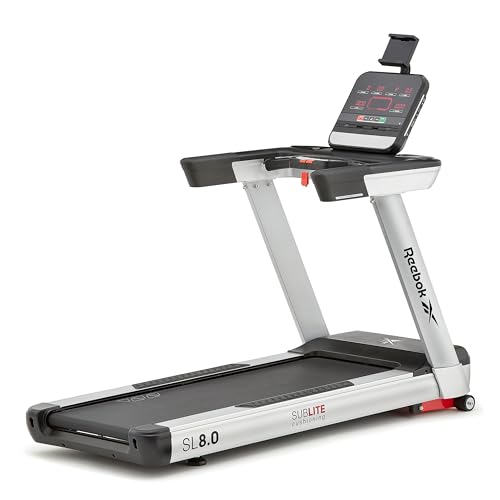From Around The Web From The Web: 20 Awesome Infographics About Non Folding Treadmill
Non-Folding Treadmills: The Ultimate Guide for Fitness Enthusiasts
As home fitness continues to get traction, lots of people are looking for devices that meets their requirements without compromising quality or efficiency. One essential player in this arena is the non-folding treadmill. Unlike folding treadmills, which are created for density and mobility, non-folding treadmills are generally more robust, providing boosted sturdiness and machine performance. Manual Treadmill Uk will explore the features, benefits, constraints, and choices offered for non-folding treadmills.
What is a Non-Folding Treadmill?
A non-folding treadmill is a stationary workout machine that does not have the capability to fold its deck for storage. Particularly designed to be a permanent component in physical fitness spaces, these treadmills generally have a bigger footprint, permitting a host of comfy functions fit for serious runners and gym-goers.
Benefits of Non-Folding Treadmills
Stability and Durability: Non-folding treadmills typically have a stronger construction, providing boosted stability throughout high-intensity exercises. They are built to manage diverse user weights and running rates, which can lengthen their lifespan.
Advanced Features: Many non-folding models come equipped with sophisticated technological functions, such as wise screen systems, automated incline modifications, and pre-set workout programs, which deal with severe fitness lovers.
Larger Running Surface: These treadmills typically offer a larger and longer running location, which can be particularly advantageous for runners who choose to train at higher speeds or for those with longer strides.
Better Motor Performance: Non-folding treadmills generally have more powerful motors compared to their folding counterparts, enabling better performance throughout extreme running sessions.
Disadvantages of Non-Folding Treadmills
Space Requirements: Since they do not fold, non-folding treadmills require more room in your house or health club. If area is a constraint, this may be a vital factor to consider.
Lack of Portability: These devices can be troublesome to move. It is challenging to transfer a non-folding treadmill compared to a folding one, which might be a downside for those who move often or reorganize home health club layouts typically.
Price: Non-folding treadmills are usually more costly than folding treadmills, generally due to their sophisticated functions and resilient build.
Key Features to Consider
When trying to find the right non-folding treadmill, a number of features need to be considered to ensure you make an informed choice:
Feature
Importance
Motor Power
Search for a motor of at least 2.5 CHP for strong efficiency.
Belt Size
A belt width of 20 inches or broader is ideal for comfort and security.
Incline Range
An incline of 10% to 15% provides more workout range.
Innovation Integration
Think about designs with Bluetooth abilities, workout apps, and heart rate tracking.
Warranty
A robust service warranty (a minimum of 10 years for the frame and motor) suggests durability.
Top Non-Folding Treadmills on the marketplace
Here is a comprehensive summary of some of the leading non-folding treadmills presently readily available:
Treadmill Model
Motor Power (CHP)
Running Surface (inches)
Incline (%)
Price Range (GBP)
Warranty
NordicTrack Commercial 1750
3.75
22 x 60
15
₤ 1,799 – ₤ 2,199
10-Year Frame, 2-Year Parts
Sole F85
3.5
22 x 60
15
₤ 1,699 – ₤ 2,099
Lifetime Frame, 5-Year Parts
LifeSpan TR3000i
2.5
20 x 56
15
₤ 999 – ₤ 1,299
Life Time Frame, 5-Year Parts
ProForm Pro9000
3.0
22 x 60
15
₤ 1,499 – ₤ 2,299
Lifetime Frame, 2-Year Parts
Horizon Treadmill 7.0 AT
3.0
20 x 60
12
₤ 899 – ₤ 1,099
Lifetime Frame, 1-Year Parts
Frequently Asked Questions About Non-Folding Treadmills
1. Are non-folding treadmills much better than folding ones?Non -folding treadmills usually offer better stability, toughness, and more advanced features. This makes them perfect for severe runners, but it ultimately depends upon private requirements and available area.
2. Can a non-folding treadmill be utilized for walking?Yes! Non-folding treadmills are not restricted to running; they can also be perfect for walking and can accommodate a broad variety of fitness levels. 3. Just how much area do I need for a non-folding treadmill?It is advised to have a dedicated area measuring at least 7 feet long and 3 feet wide around the treadmill for safe use. 4. Is it possible to transport a non-folding treadmill?While it can be done, it may need extra effort as they are typically heavierand bulkier than folding models. 5. What's the average lifespan**
of a non-folding treadmill?With routine upkeep and appropriate usage, non-folding treadmills can last in between 10 and 15 years or more.**
Non-folding treadmills represent a significant financial investment
for those serious about maintaining or improving their fitness and health. With their emphasis on resilience, stability,
and improved features, they deal with users making every effort for performance and longevity. Choosing the right design includes carefully considering your workout practices, area schedule, and spending plan. By understanding the characteristics that make non-folding treadmills an exceptional choice, individuals can make educated decisions that will boost their home physical fitness experience. Whether it's for walking, jogging, or high-intensity training, the ideal non-folding treadmill can be a significant ally in accomplishing physical fitness objectives. 